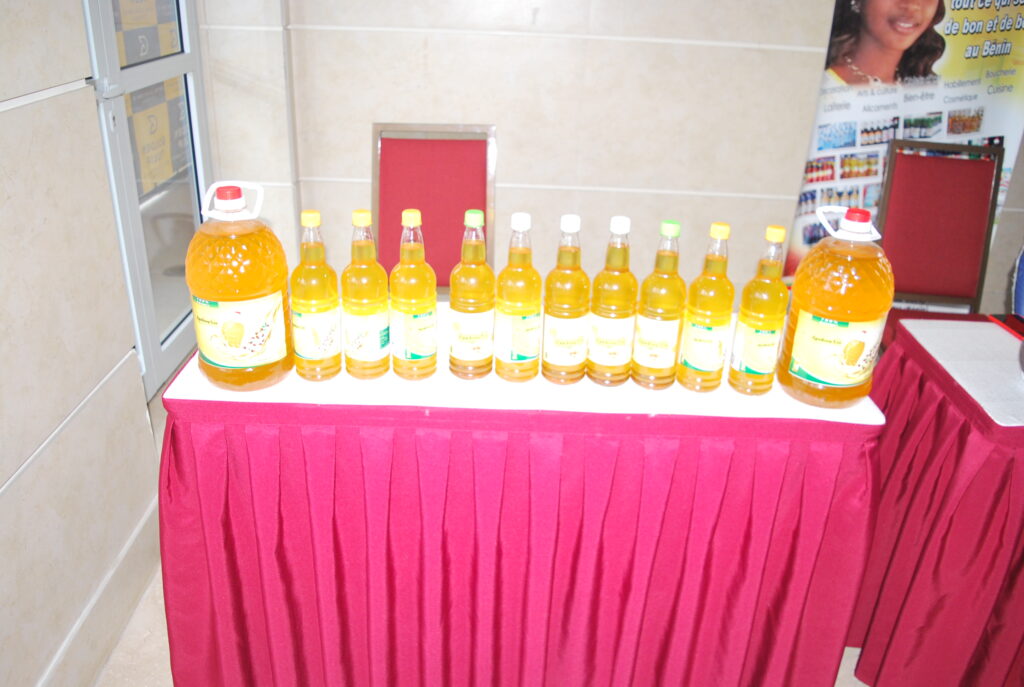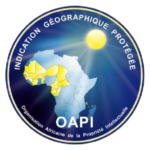IGP PRODUCTS IN THE OAPI AREA
From the OAPI area
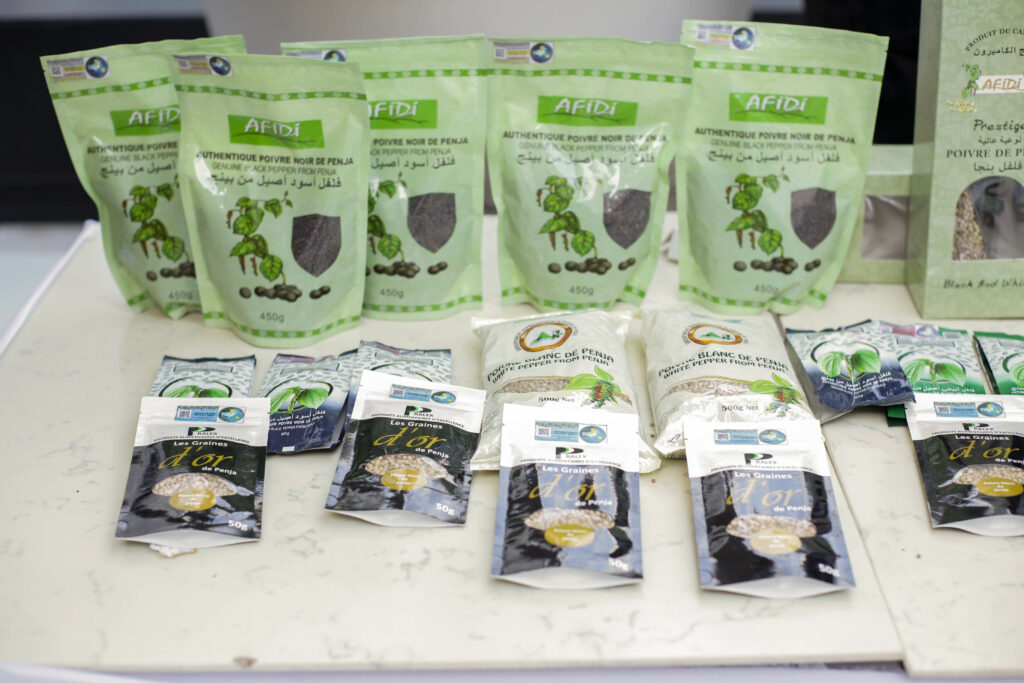
Penja pepper
The poivre de PenjaPenja pepper is a spice obtained from the berries of the pepper tree, a climbing plant cultivated in the Littoral and South-West regions of Cameroon, more precisely in the communes of Manjo/Nlohé, Loum, Njombé, Penja, Mbanga and Tombel. The microclimate, soil, altitude, cultivation and processing methods of this area combine to produce the highly desirable flavor, pungency, spiciness and distinctive aroma for which Penja pepper is renowned. It has an exceptional character: woody, powerful without being aggressive. A distinction is made between white pepper, black pepper, green pepper and red pepper. Penja pepper was recognized as geographical indication protected by OAPI on September 10, 2013. |

Ziama Macenta coffee
Ziama Macenta coffee is a Robusta coffee known for its Arabica-like characteristics: a tangy, slightly bitter flavor, high aromatic intensity, a persistent, strong, fine aroma and a slightly tapered, semicircular shape. This coffee comes exclusively from clones or hybrids, both traditional and clone varieties. All production operations take place in the communes of Mancenta, Daro, Fassankoni, Kouankan, Nzebela, Ouremai, Sengbèdou, Sérédou and Vasseredou, in the Prefecture of Macenta, in southern Guinea. These localities essentially border the Massif du Mont ziama Ziama Macenta coffee was recognized as geographical indication protected at OAPI on March 14, 2014. |
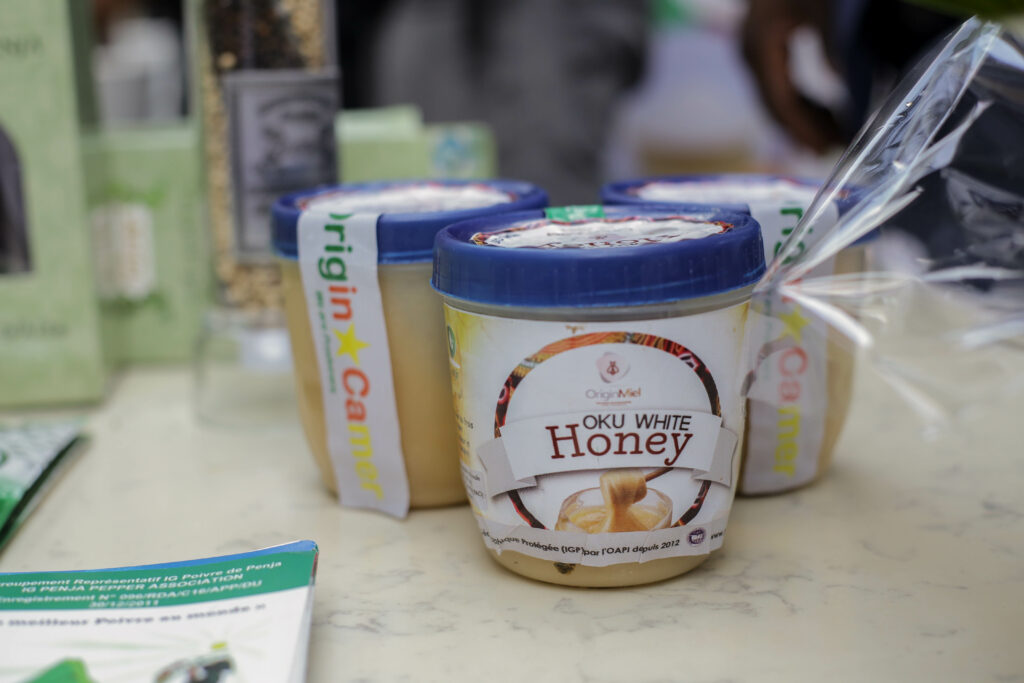
Oku white honey
Oku white honey comes from the Kilum-Ijim protected forest, a biodiversity hotspot in Cameroon, on the slopes of Mount Oku, overlooking the communes of Fundong and Belo, Boyo, Kumbo and Elak in the North-West region of Cameroon. C’It is a particular type of multifloral honey, white in color, naturally creamy, fresh in the mouth with floral and citrus aromas. It has a soft, slightly granular texture. Oku white honey was recognized as geographical indication protected by OAPI on September 10, 2013. |

Sugar loaf of the Allada Plateau
The "Pain de sucre" pineapple is a variety whose morphotypes have the particularity of remaining green at physiological maturity. The fruit has an elongated or conical shape. Local growers refer to it as a "bottle" pineapple. The crown bears spines. The flesh is white, very sweet and juicy, with a good sugar-acidity ratio, earning it the name " « Pain de sucre »The flesh is meltingly soft when ripe, with a tender center that's easy to eat. It has a very strong, pleasant fruity aroma. The fruit is fragile and does not lend itself to handling. This variety is not very susceptible to disease. The geographical production and packaging area for Pain de sucre du plateau d'Allada pineapple is located in the Atlantic department, in southern Benin. It covers the communes of Abomey-Calavi, Allada, Kpomassè, Toffo, Tori-Bossito and Zè.Pineapple Pain de sucre du Plateau d'Allada-Bénin was recognized geographical indication protected by OAPI on September 10, 2013. |

Bandiagara Echalotte
Also known locally as Bandiagara Jaba, the Bandiagara shallot is a vegetable belonging to the Liliaceae family Liliaceae, on the type genus Allium, of the species Cepa and exclusively to the aggergatum group. aggergatumTaking into account the special provisions for the quality of Bandiagara Jaba, Bandiagara Jalani (shallot variants) and the tolerances allowed, shallot bulbs and slices must be whole, firm, free from abnormal moisture, foreign smell and/or taste, coloring or blending. All stages of production take place in the geographical area covering the Bandiagara, Bankas, Koro and Douentza circles in the Republic of Mali. The Bandiagara shallot was recognized as a Protected Geographical Indication by the OAPI in July 2021 |

Galmi Violet Onion
Surrounded by plateaus, the valleys of the Tahoua region, and in particular the Maggia valley in Niger, are rich in groundwater, which is used for irrigation during the dry season, when onions are grown. Galmi is a large village on the edge of the Maggia valley, 500 km from Niamey on National Route 1, which crosses Niger from east to west. Violet de Galmi is a piquant-tasting onion that can be kept for a long time and is ideal for making sauces. It has a flattened bulb, green in color with dark purple outer scales and light purple inner scales. It has excellent keeping qualities. Oignon violet de Galmi was recognized as a Protected Geographical Indication by the OAPI in July 2021 |

Kilichi du Niger
According According to the actors, the term Kilichi probably comes from Kiliss. This term, translated from the Tamashek language, means dried strips of meat. According to the actors, the term Kilichi probably comes from Kiliss. This term, translated from the Tamashek language, means dried strips of meat. Kilichi is a meat-based product, usually beef, dried and grilled in strips and seasoned with a spicy paste A traditional product,it's it is a dried meat preparation used in Niger and northern Cameroon. Kilichi is produced in the Far North, North and Adamaoua regions, which are prime beef-producing areas. This dried meat is generally consumed as a snack,but is sometimes used in salads Well-dried Kilichi can be kept for over six months. A highly prized product, it could be exported Its production and manufacture has become a cottage industry practiced mainly by butchers. Kilichi du Niger was recognized as a Protected Geographical Indication by the OAPI in July 2021 |
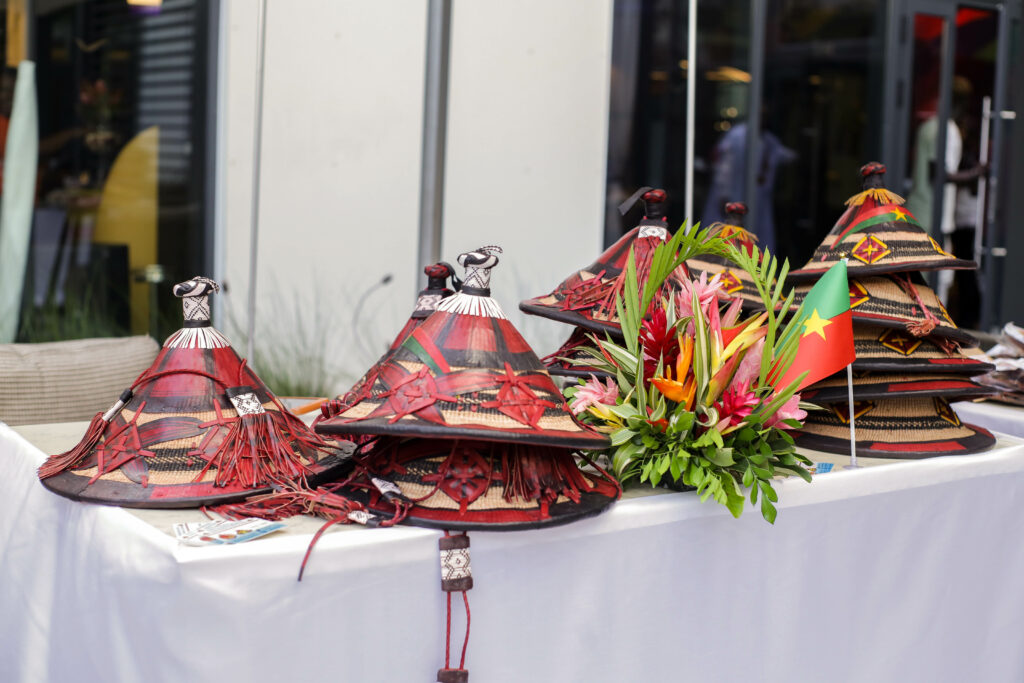
Saponé hat
The Saponé hat is a type of conical hat with a circular base and a top that may or may not be cork-shaped. It is made from raffia fibers (Raphia sudanica of the raecacae family), raecacae),sourced from the Boromo and Diébougou areas on the banks of the Mouhoun River and neighboring Ghana. It is associated with tanned skin, obtained in the locality of Pouytenga. Locally known as "Sapon' Zoupééogo" or "Sapon zug péögo",the Saponé hat is made in the rural commune of Saponé. It is a specific product of traditional local craftsmanship dating back to the 13thème century. The Chapeau de Saponé was recognized as a Protected Geographical Indication by the OAPI in July 2021 |
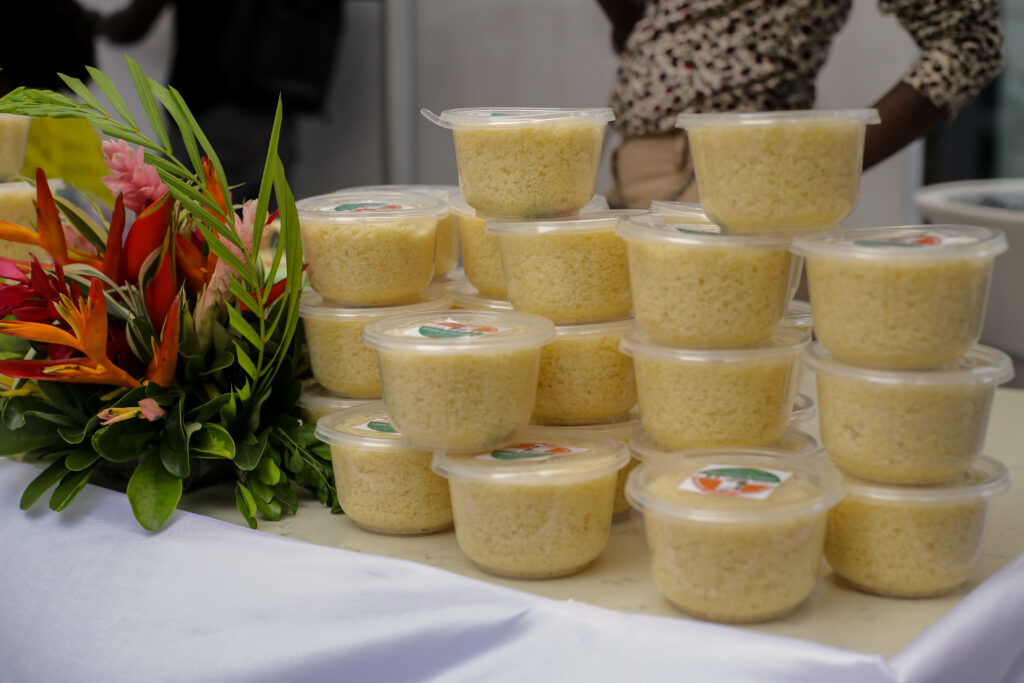
Attiéké from the Lagoon
Attiéké from Lagoon is the famous semolina made from manioc tubers, agglomerated in appearance, white or yellow in color, fermented cream and steamed, which in just a few decades has gone from being a traditional dish of the Ivorian coastal lagoon zone to a product appreciated and sought after throughout Côte d'Ivoire. Having become the best Ivorian dish its rapid spread throughout the country and beyond has made it one of the outstanding "success stories" of African cuisine. Attiéké is the pride of the people of the Departments of Dabou, Grand Lahou and Jacqueville in Côte d'Ivoire. Attiéké from Lagoon was officially registered as a Protected Geographical Indication in the OAPI region on July 18, 2023. |
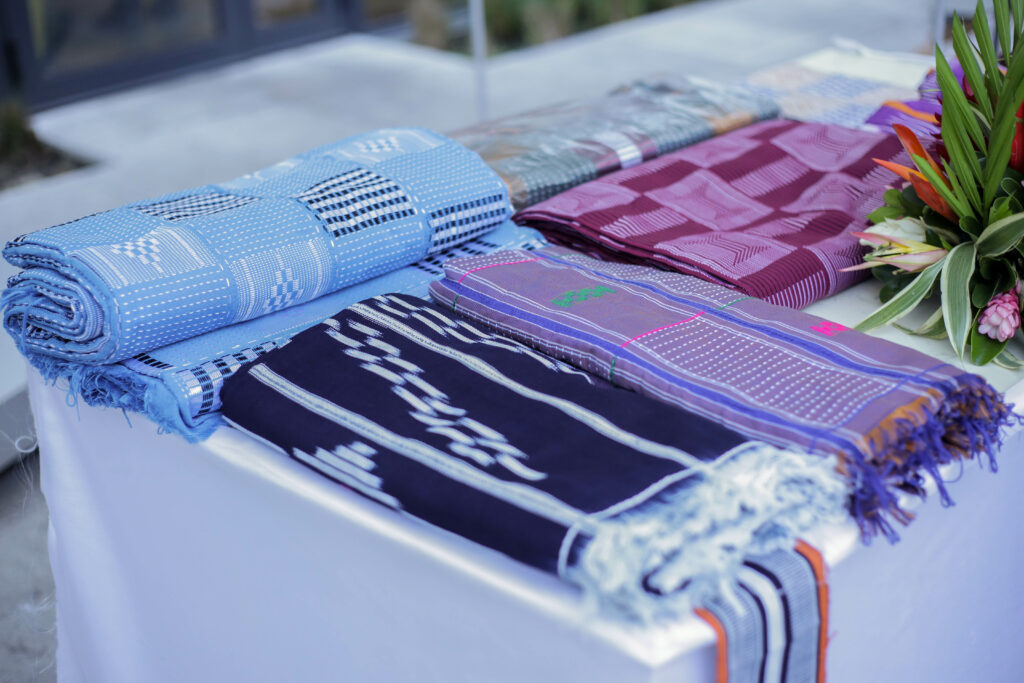
Baoule loincloth
The Baoule loincloth also called "Wawlé Tani" is a handcrafted fabric highly prized in Côte d'Ivoire for its quality and vibrant patterns.
This famous garment is made in many villages in the Baoulé region, from narrow strips of woven cotton sewn together.
- SOON PROTECTED GEOGRAPHICAL INDICATIONS

Cameroon red cocoa
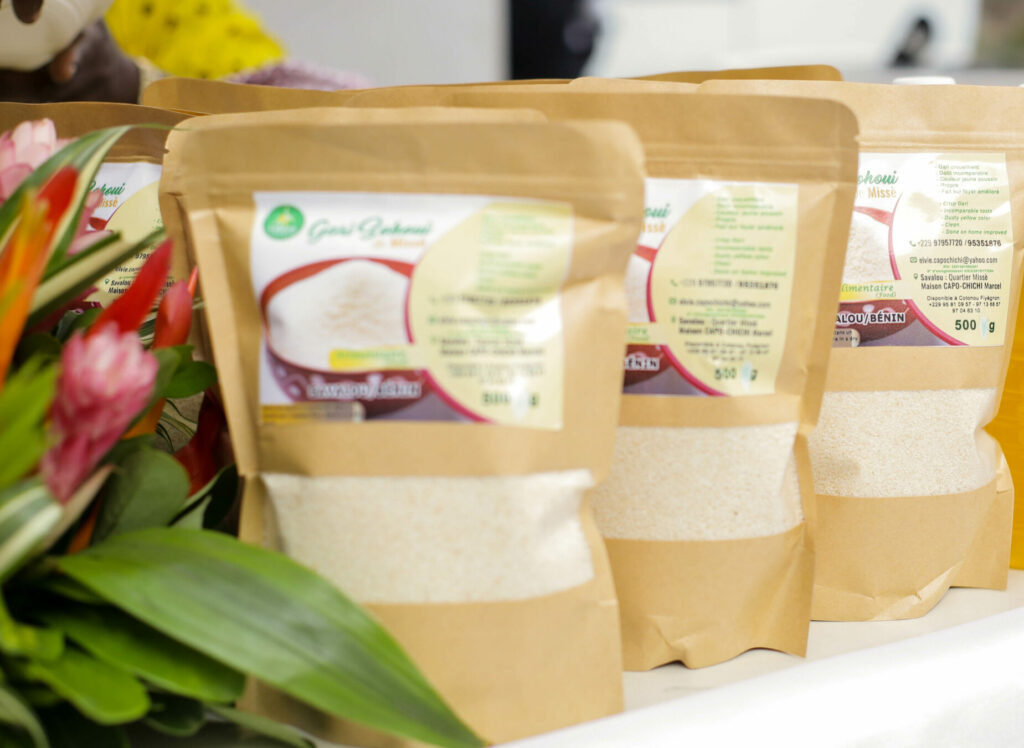
Gari Sohui from Savalou

Baroness of Guinea
